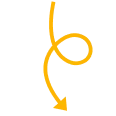Week 1 of Embryonic Development
Week 1 of Embryonic Development
The first week of human development begins with fertilization of the egg by sperm forming the first cell, the zygote. Cell division leads to a ball of cells, the morula. Further cell division and the formation of a cavity in the ball of cells forms the blastocyst.
Initially, there is a halving of chromosomal content in the gametes (spermatozoa and oocyte) by the process called gametogenesis. Chromosomal content is then restored by fertilization, allowing genetic recombination to occur.
This is then followed by a series of cell divisions without cytoplasmic growth. During this first week the egg, then zygote, morula then the blastula is moving along the uterine horn into the uterus for implantation in the uterine wall.
Summary
- The conceptus proceeds through embryonic cell cycle rounds of mitosis still enclosed within the zona pellucida. Progressing from a zygote, to blastomeres, then to a morula and finally to a blastocyst.
- The uterine tube epithelium consists of ciliated cells that are moving the secreted fluid towards the uterine body. The conceptus is floating “boat-like” within this fluid and moved in the same direction.
- Towards the end of the first week the blastocyst has reached the uterine body and from about day 5 onwards, the blastocyst “hatches” from the surrounding zona pellucida.
- The conceptus can now receive nutrition directly and can commence the process of implantation in week 2.
Molecular Changes
There are several important changes that occur in this new diploid cell beginning the very first mitotic cell divisions and expressing a new genome.
The oocyte arrested in meiosis is initially quiescent in terms of gene expression, and many other animal models of development have shown maternal RNAs and proteins to be important for early functions.
The new zygote gene expression is about cycles of mitosis and maintaining the totipotency of the stem cell offspring cells.
The morula gene expression supports the formation of two populations of cells the trophoblast (trophectoderm) and embryoblast (inner cell mass), each having different roles in development, while maintaining the totipotency of these populations.
Current research is now also pointing to non-genetic mechanisms or epigenetics as an additional mechanism in play in these processes.
Cleavage
It is the repeated mitotic divisions of the zygote, resulting into a rapid increase in the number of cells that are called blastomeres.
Site: The uterine tube medial to the ampula.

DIVISION OF THE ZYGOTE into 2 daughter cells, the blastomeres, takes place by 30 hours. Further divisions follow rapidly upon one another, forming progressively smaller and smaller blastomeres: 4 are seen in 40-50 hours, 8 by 60 hours, and 12-16 by day 3 or 4
The 12-16 blastomere stage, arrived at by cleavage of the fertilized ovum, is a solid ball resembling a mulberry and is called a morula (morula stage). As it forms, the morula enters the uterine cavity from the tube.
Stages of cleavage
a- Morula: It has 16 cells(blastomeres). It has mulberry appearance. It is surrounded by Zona pellucida. It enters the uterus nearly 3 days after fertilization.
b- ABOUT DAY 4, fluid enters the morula from the uterine cavity and occupies the intercellular spaces. The fluid-filled spaces fuse to form a single, large cavity, the blastocele, and the morula is now called a blastocyst (blastocyst stage)
- As fluid increases, the cells separate into 2 major areas
- An outer cell layer, the trophoblast, which gives rise to the placenta
- A group of centrally located cells, the inner cell mass or embryoblast, which gives rise to the embryo proper
- The free blastocyst is seen in the uterine cavity on day 4 or 5, from this time the zona pellucida disappears rapidly
Week 1 abnormalities
Dizygotic Twinning
- Dizygotic twins (fraternal, non-identical) arise from separate fertilization events involving two separate oocyte (egg, ova) and spermatozoa (sperm).
Monoygotic Twinning
- Monozygotic twins (identical) produced from a single fertilization event (one fertilised egg and a single spermatazoa, form a single zygote), these twins therefore share the same genetic makeup. Occurs in approximately 3-5 per 1000 pregnancies, more commonly with aged mothers. The later the twinning event, the less common are initially separate placental membranes and finally resulting in conjoined twins.



